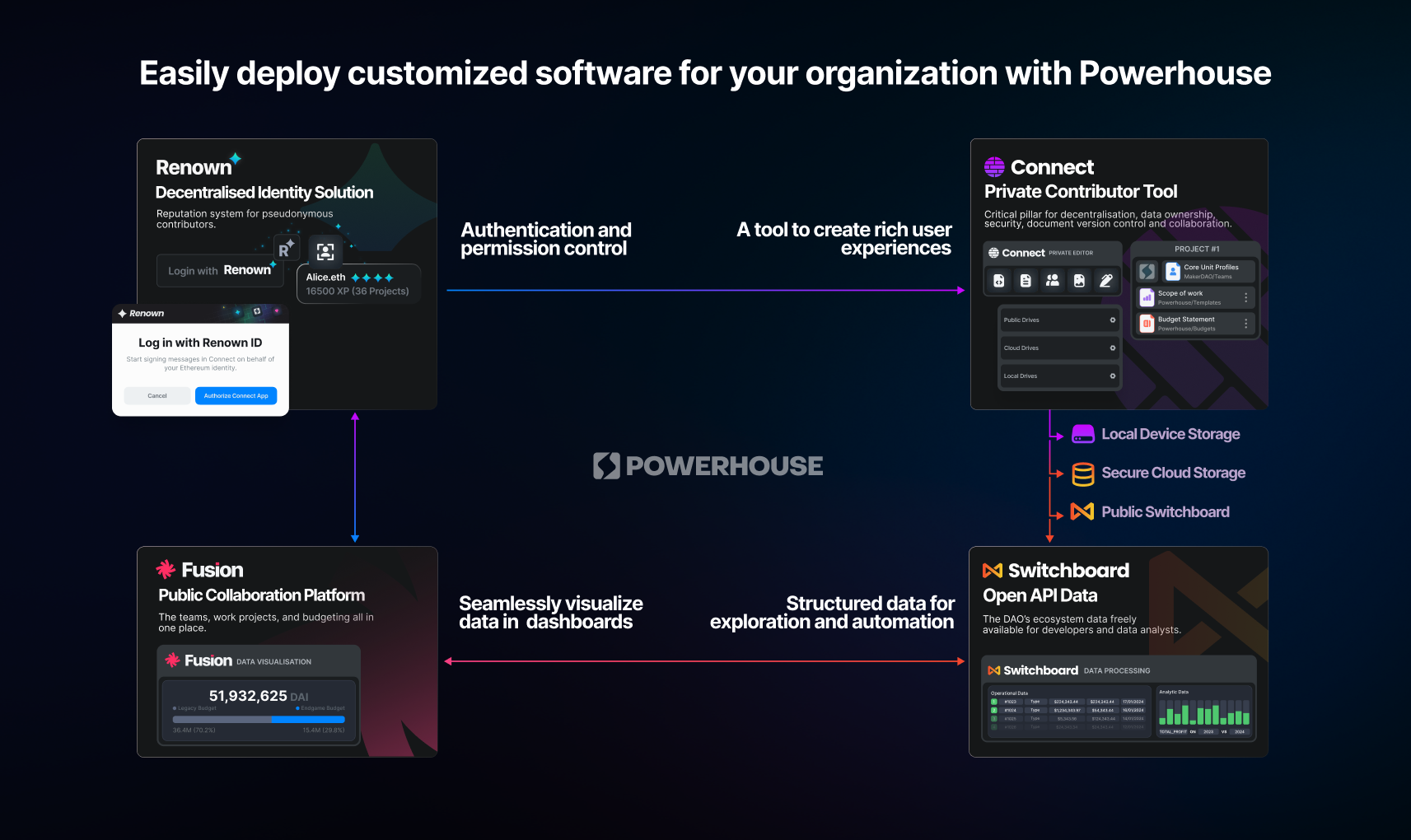Powerhouse Architecture
The Powerhouse ecosystem is built on five core host applications that together form a modular, scalable operating system for decentralized organizations. Each application serves a distinct role, yet they are interdependent, working as a unified system to streamline operations, enhance collaboration, and drive automation.
These five applications are:
- Connect – The contributor's public or private workspace.
- Switchboard – The data infrastructure and API engine.
- Fusion – The public-facing collaboration hub.
- Renown – The decentralized reputation and identity system.
- Academy – The onboarding and learning modules.
Each application is designed to be modular yet complementary, ensuring smooth data flows, structured collaboration, and scalable automation. The functionality of the four host apps offers an integrated experience for running decentralized operations.

How the Five Applications Work Together
The Powerhouse ecosystem functions as a decentralized operating system, where each of the four core applications works in synergy to ensure seamless collaboration, structured data management, and automated workflows. Each application has a distinct purpose, yet their interconnectivity is what makes the system powerful.
1. Connect: The Contributor's Workspace and Data Capture Point
Connect is the entry point for individual contributors, where they install apps and packages tailored to specific business solutions, enabling collaboration in public or private settings.
- All work in Connect is captured as document models, ensuring that data is structured, traceable, and immediately available for processing.
- This structured data flows into Switchboard, making it accessible for analytics, automation, and API-driven integrations.
- Fusion then utilizes this data to generate dashboards, summaries, and insights for decision-making.
- Renown serves as the authentication and access gateway, ensuring that contributors can securely interact with the system.
2. Switchboard: The Data Processing and Automation Engine
Switchboard acts as the central nervous system, ensuring that data flows efficiently between applications and powers real-time coordination.
- It ingests structured data from Connect and makes it available for further analysis, automation, and integrations.
- The API interface allows developers and data engineers to fuel the broader system, providing insights and feeding data-driven workflows.
- The processed data is then transmitted to Fusion, where it is transformed into dashboards, analytics, and key performance indicators (KPIs).
3. Fusion: The Public Collaboration and Data Visualization Layer
Fusion serves as the public-facing marketplace and collaboration hub, allowing contributors and organizations to interact with structured data captured from Connect and processed through Switchboard.
- Fusion structures, summarizes, and visualizes key metrics, enabling users to make data-driven decisions.
- It pulls relevant operational insights, helping stakeholders navigate and act on real-time data.
- Users can directly access work completed in Connect, viewing reports, summaries, and discussions within Fusion's public and private environments.
4. Renown: Authentication, Reputation, and Access Control
Renown is the trust and identity layer, ensuring security, reputation tracking, and access control across the ecosystem.
- It acts as the authentication gateway, determining who has permission to view, edit, or execute specific operations within the system.
- Every action performed in Connect is tracked in the document history, making it fully auditable through Switchboard.
- Fusion utilizes Renown to verify contributor credibility, ensuring that data-driven decisions are based on trusted and authenticated inputs.